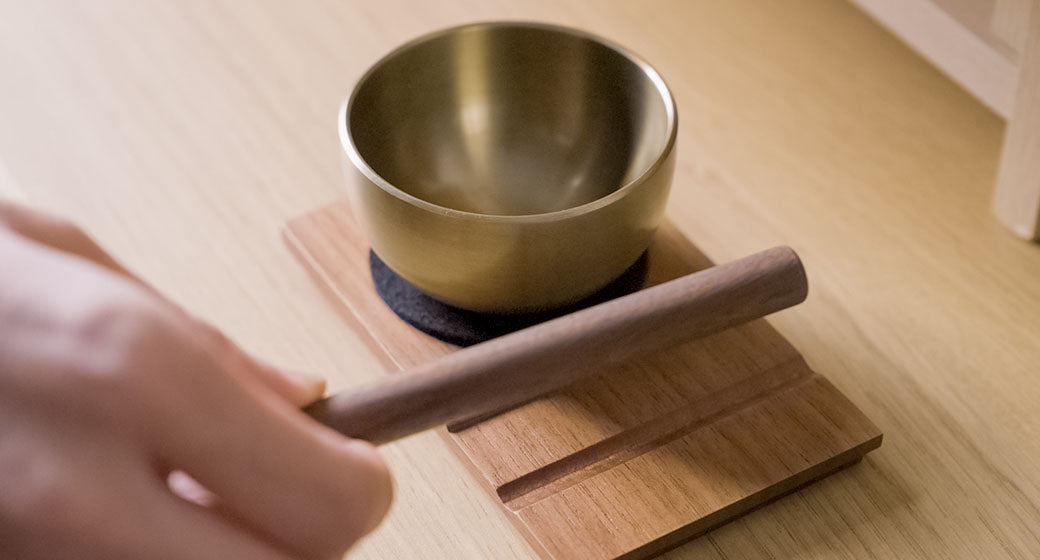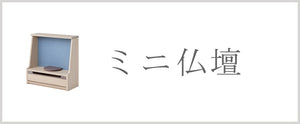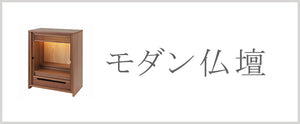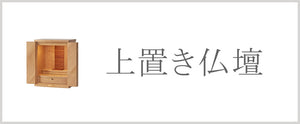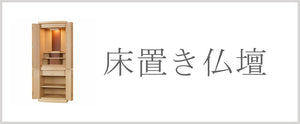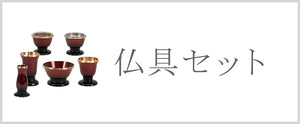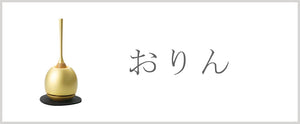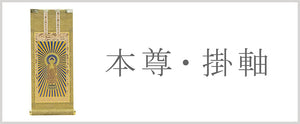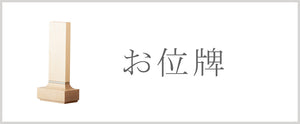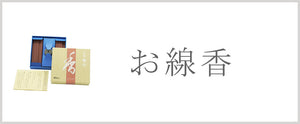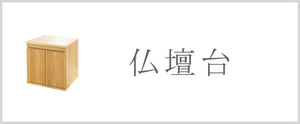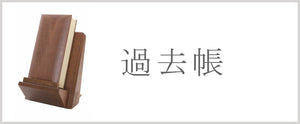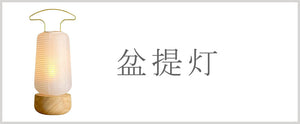Last updated:
Release date:
That Buddhist altar accessory that rings when you pray at the altar.
This Buddhist altar implement, which many people have seen but whose name they don't know, is called an "orin" and is one of the most familiar religious implements.
I'm sure many people feel a sense of relief and calm when they hear that sound.
This time, we will explain the points you should know before purchasing an orin and the correct way to use it.
What is the role of the Orin?
Orin is called a Bonongu (a Buddhist instrument) and was originally a Buddhist instrument used to ring before and after religious services such as chanting sutras.
However, its clear sound is said to ward off evil spirits and purify the space, and it has now become an indispensable Buddhist implement even for those who do not perform religious services.
It is generally called "orin," but depending on the sect, it may also be called "kin" or "kane."
About the shape and material of the orin
Orin is used regardless of sect.
In the past, bowl-shaped bells were the norm, but recently modern types have appeared, such as spherical types or ones with integrated bell rods to match furniture-style Buddhist altars, so there is a wide range of options to choose from.
There are four main materials:
Sahari (copper and tin alloy)
Among all orin bells, it is said to have particularly good sound quality and reverberation.
Because of its good sound, it is also used in metal instruments such as cymbals and gongs.
Silzin bronze [an alloy of copper, zinc, and silicon]
This metal came to be used as a substitute for the expensive Sahari, and today many orin are made from this material.
Brass (an alloy of copper and zinc)
It is the most common material for metal Buddhist altar equipment.
Since it can be made into complex shapes by heating, it is possible to create highly designed bells.
Pure gold (mainly 18k gold)
It has a unique high tone.
It is an expensive material that some people purchase to build up their assets.
It is difficult to shape bells out of 24 karat gold, and 10 karat gold does not have any expected asset value, so most bells are made out of 18 karat gold.
Also, the price fluctuates depending on the gold market price.
How to Choose the Right Orin
You can freely choose the shape of the bell.
Let's take a closer look at the three criteria that will help you make your selection.
There are no complicated religious rules, so please take the points into consideration and find one that you think is nice.
Select by "Sound"
Generally, the pitch of the sound is proportional to the size of the bell.
Smaller sizes (around 1.8 to 2.3 inches) tend to produce clear high tones, while larger sizes (2.5 inches or more) tend to produce calm low tones.
Another thing to do is listen carefully to the reverberation of the sound.
You can see that there are types that are straight and flowing, and types that are wavy and bouncy.
Feel free to choose what you think sounds best.
Choose by "Size"
If you already have a Buddhist altar or are purchasing one at the same time, you can choose based on the size of the altar.
The size of a bell is often expressed in terms of its diameter, and the unit of length is traditionally "sun" (1 sun is approximately 3.3 cm).
This is not a very common term these days, so if you are purchasing without seeing the actual product, be sure to check the detailed description.
The recommended sizes for your altar are as follows:
- For a top-mounted Buddhist altar: 1.8 to 2.5 inches
- For pedestal Buddhist altars (H130cm or less): 2.3 to 3.0 sun
- For a pedestal Buddhist altar (H130cm or more) 3.0 inches or more
Choose by "Size"
In addition to choosing based on the "size" and "sound" we suggested earlier, be sure to check the maintenance instructions before purchasing.
Traditional bells tend to turn black over time due to the characteristics of the material they are made of, so they require regular maintenance with metal polish.
For this reason, recently, more and more products have been coated with clear paint (including coatings such as fluorine treatment, gold plating, and ceramic treatment) to help keep them in a clean condition with less strain.
If sound resonance is important to you, it is said that the bare metal resonates better, but there are plenty of clear-coated instruments that sound just as good, so feel free to choose based on your priorities.
Is there anything I can purchase as a set with the Orin?
Some of the latest modern Buddhist altar accessories come in complete sets, but if they are sold separately, it's a good idea to check whether you need to prepare the Buddhist altar accessories listed below.
Phosphorus futon
This is a futon for placing a bowl-shaped bell on.
In addition to round shapes, there are also flower shapes and other shapes available, so you can choose according to your preference.
Phosphorus stick
This is a stick used to strike a bell.
The wood is wrapped in cloth or white leather, and the thicker the fabric, the softer and mellower the sound.
The plain wooden type, which matches the furniture-style Buddhist altar, is suitable for those who prioritize design.
Rindai
This is a Buddhist altar accessory that is often prepared when pairing with a traditional Buddhist altar.
Originally, orin was meant to be placed on a tatami mat, so its purpose was to make it at a height that made it easy to ring when sitting in seiza.
However, this is not necessary if you place it on a sutra desk or tray.
The format may vary depending on the sect.
If you choose a modern style to match a furniture-style Buddhist altar, you can freely choose your favorite design.
The correct way to ring an orin
When you actually ring a bell, you may notice that the sound resonates differently depending on the person.
If you're going to do it, you want to make sure it produces good sound in the right way.
The key to producing a good sound is surprisingly simple.
Learn the correct way to play the bell, including how to strike it to produce a good sound.
Where does sound resonate best?
There are various shapes of orin, but in all cases, you should strike the edge at the top of the bell from the side, bouncing it.
Be careful not to hit it from above instead of from the side, as this will stop the sound from resonating.
When is the right time to ring it?
Originally, it was done at the beginning and end of the chanting in accordance with the rules of each sect.
If you are not chanting sutras, it is a good idea to ring the bell before joining your hands in prayer.
Is there a rule about how many times it should ring?
Officially, the number of times varies depending on the sect.
But at home, you don't need to worry too much.
Let the sound resonate slowly and calmly once or twice.
Listen to the sound of the bell and quietly join your hands together. Cherish that moment.
Orin can be used regardless of sect.
There are so many options that it can be hard to choose, but you can't go wrong if you choose the one you like based on size, sound, and care instructions.
Listening to the sound of the bell, I gently clasp my hands together and feel a sense of peace in my heart.
It will be a precious and important time for everyone.
Nagomi Kobo TOP page is here >
